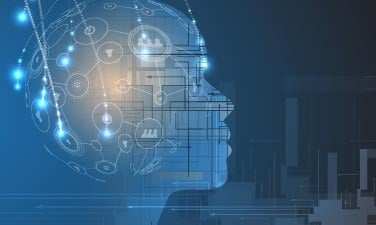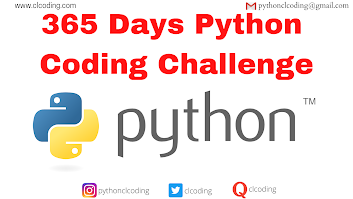Introduction
In modern data science, handling and analysing tabular (structured) data is one of the most common tasks — whether it’s survey data, business data, time-series data, logs, or CSV/Excel/SQL exports. The Python library pandas has become the de-facto standard for this work. “Pandas for Data Science” is a course designed to teach you how to leverage pandas effectively: from reading data, cleaning it, manipulating, analyzing, and preparing it for further data science or machine learning tasks.
If you want to build a solid foundation in data handling and manipulation — this course offers a well-structured path.
Why This Course Matters
-
Structured Learning of a Core Data Tool
-
Pandas is foundational in the Python data science ecosystem: with its data structures (
Series,DataFrame) you can handle almost any tabular data. -
Knowing pandas well lets you move beyond spreadsheets (Excel) into programmable, reproducible data workflows — an essential skill for data scientists, analysts, and ML engineers.
-
-
Focus on Real-World Data Challenges
-
In practice, data is messy: missing values, inconsistent types, duplicate rows, mixed sources. This course teaches how to read different data formats, clean and standardize data, deal with anomalies and missing data.
-
It emphasizes best practices — loading data correctly, cleaning it, managing data types — critical steps before any analysis or modeling.
-
-
End-to-End Skills—From Raw Data to Analysis-Ready Tables
-
You learn not just data loading and cleaning, but also data manipulation: filtering, merging/joining tables, combining data from multiple sources, querying, aggregating. These are everyday tasks in real data workflows.
-
As a result, you get the confidence to handle datasets of varying complexity — useful whether you do exploratory data analysis (EDA), report generation, or feed data into ML pipelines.
-
-
Accessibility for Beginners
-
The course is marked beginner-level. If you know basic Python (variables, lists/dicts, functions), you can follow along and build solid pandas skills.
-
This makes it a great bridge for developers, analysts, or students who want to move into data science but don’t yet have deep ML or statistics background.
-
What You Learn — Course Contents & Core Skills
The course is organized into four main modules. Here’s what each module covers and what you’ll learn:
1. Intro to pandas + Strings and I/O
-
Reading data from files (CSV, Excel, maybe text files) into pandas.
-
Writing data back to files after manipulation.
-
Handling string data: cleaning, parsing, converting.
-
Basic file operations, data import/export, and understanding data I/O workflows.
2. Tabular Data with pandas
-
Introduction to pandas core data structures:
DataFrame,Series. -
Recognizing the characteristics and challenges of tabular data.
-
Basic data manipulation: indexing/filtering rows and columns, selecting subsets, etc.
3. Loading & Cleaning Data
-
Reading from various common data formats used in data science.
-
Data cleaning: dealing with missing values, inconsistent types or formats, malformed data.
-
Best practices to make raw data ready for analysis or modeling.
4. Data Manipulation & Combining Datasets
-
Techniques to merge, join, concatenate data from different sources or tables. Important for multi-table datasets (e.g. relational-style data).
-
Efficient querying and subsetting of data — selecting/filtering based on conditions.
-
Aggregation, grouping, summarization (though this course may focus mostly on manipulation — but pandas supports all these.)
Skills You Gain
-
Data import/export, cleaning, and preprocessing using Python & pandas.
-
Data manipulation and integration — combining data, transforming it, shaping it.
-
Preparation of data for further tasks: analysis, visualization, machine learning, reporting, etc.
Who Should Take This Course
This course is particularly useful for:
-
Aspiring data scientists / analysts who want a strong foundation in data handling.
-
Software developers or engineers who are new to data science, but already know Python and want to learn data workflows.
-
Students or researchers working with CSV/Excel/tabular data who want to automate cleaning and analysis.
-
Business analysts or domain experts who frequently handle datasets and want to move beyond spreadsheets to programmatic data manipulation.
-
Anyone preparing for machine learning or data-driven projects — mastering pandas is often the first step before building statistical models, ML pipelines, or visualization dashboards.
How to Make the Most of the Course
-
Code along in a notebook (Jupyter / Colab) — Don’t just watch: write code alongside lessons to internalize syntax, workflows, data operations.
-
Practice on real datasets — Use publicly available datasets (CSV, Excel, JSON) — maybe from open data portals — and try cleaning, merging, filtering, summarizing them.
-
Try combining multiple data sources — E.g. separate CSV files that together form a relational dataset: merge, join, or concatenate to build a unified table.
-
Explore edge cases — Missing data, inconsistent types, duplicated records: clean and handle them as taught, since real datasets often have such issues.
-
After pandas, move forward to visualization or ML — Once your data is clean and structured, you can plug it into plotting libraries, statistical analysis, or ML pipelines.
What You’ll Walk Away With
-
Strong command over pandas library — confident in reading, cleaning, manipulating, and preparing data.
-
Ability to handle messy real-world datasets: cleaning inconsistencies, combining sources, restructuring data.
-
Ready-to-use data science workflow: from raw data to clean, analysis-ready tables.
-
The foundation to proceed further: data visualization, statistical analysis, machine learning, data pipelines, etc.
-
Confidence to work on data projects independently — not relying on manual tools like spreadsheets but programmable, reproducible workflows.
Join Now: Pandas for Data Science
Conclusion
“Pandas for Data Science” gives you critical, practical skills — the kind that form the backbone of almost every data-driven application or analysis. If you want to build data science or machine learning projects, or even simple data-driven scripts, pandas mastery is non-negotiable.
This course offers a clear, structured, beginner-friendly yet deep introduction. If you put in the effort, code along, and practice on real datasets, you’ll come out ready to handle data like a pro.





.png)







.png)


.png)
%20by%20Allen%20B.%20Downey.jpg)










.png)



%20by%20Allen%20B.%20Downey.jpg)









.png)










